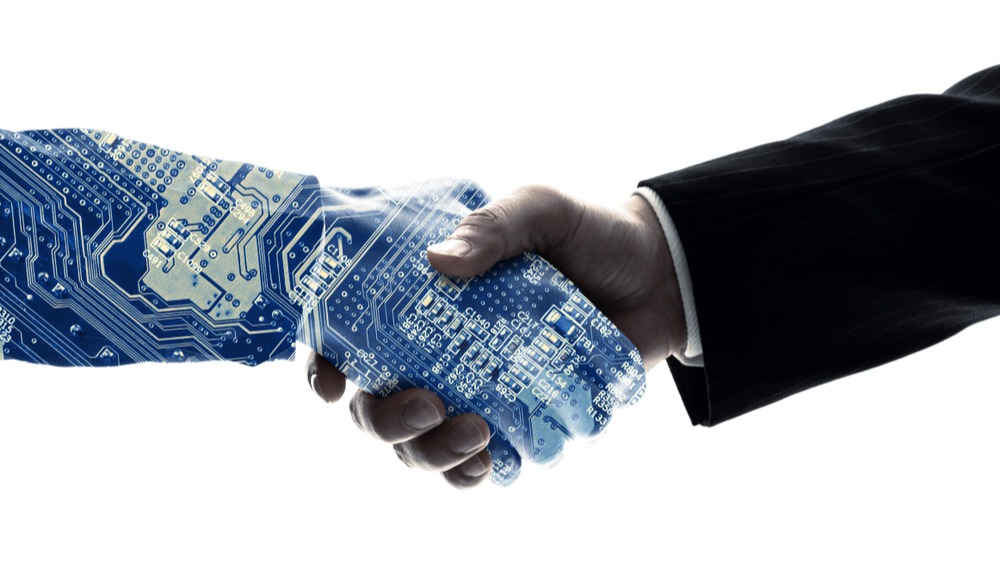Back to articles
Harnessing man and machine’s strengths for better IoT outcomes with ML

In the time it takes you to read this blog, the average adult human will have made more than 200 decisions, or so it has been claimed. Columbia University research posits a far more modest total of 70 conscious daily decisions. Whatever the actual number, humans make a lot of decisions, and we’ve become highly skilled at it.
We're good at decision-making because we've learned to compensate for our weaknesses. We use mental shortcuts or heuristics to counteract our inability to process lots of information. We use gut feeling and intuition to help us make decisions based on unconscious recall of observation and experience.
Thinking like a machine
Machines, on the other hand, 'think' very differently, relying on their computational superiority to rapidly process hundreds of millions of data points and make decisions based on consequence rather than intuition. As such, computers can now do some specific tasks very well. They have, for example, comfortably conquered the best human players in games such as chess and Go. More usefully, they can also identify anomalies in thousands of x-rays faster and more reliably than any radiologist, although the difference is marginal.
- Read more: Artificial Intelligence in Healthcare
Working together in the IoT
For now, at least, machines need humans as much as humans need machines. At this intersection, machine learning (ML) offers intriguing possibilities for managing the billions of end devices that comprise the IoT. ML is a practical, mathematical field. It involves humans creating algorithms and programs that allow computers to follow hundreds of millions of instructions. The computers look for occasional deviations in an almost endless stream of otherwise unremarkable data—and then interpret patterns in those deviations to solve real-world problems.
- Read more: Why AI is set to reshape the IoT
The power of machine learning
Picture the smart city of the future, for example. Streetlights will carry sensors monitoring traffic flow and air quality. Weather stations will measure meteorological variables to predict hazardous climate events. Buildings will be embedded with hundreds of sensors to monitor everything from air conditioning and lifts to water and gas pipes. These devices and millions more will generate trillions of gigabytes of data. Making sense of it is a major headache that engineers believe ML can help them relieve.
Relaying that volume of data to the cloud so that it can be crunched, is untenable. The often battery-powered end devices don't have the energy to do it, the networks can't carry that kind of load, and even if they could, the cost to do so would be prohibitive.
TinyML at the edge
However, today's IoT devices can support TinyML, a scaled-down version of ML that enables edge devices to monitor data and use algorithms to detect deviations constantly. Data gathered from one or multiple sensors is given to the cloud, with powerful cloud servers then able to train an ML model that is updated over the air to the edge device. This enables the end device to determine what data to send to the cloud in the future, if a data deviation suggests an air conditioning unit is going to break down or a tornado is on its way, for example. In the future, the ‘learning’ will be performed on the device, but we are not there yet.
ML augmenting human intelligence
Research on the possibilities of augmented intelligence is still in its infancy, as is how it might be applied to the IoT where large-scale problems cannot always be solved by either computers or humans alone. This collaborative intelligence could allow both parties to play to their strengths. Humans must train machines and their ML algorithms to perform the work they are designed to do. Humans are also essential to interpret a machine's decisions and ensure they are functioning properly, safely, and responsibly.
A machine, on the other hand, can boost human analytical and decision-making abilities by providing the right information at the right time, and filtering out any noise it deems unnecessary for us to make our decision. Machines and their ML algorithms can also be used as an instructional tool to improve the skills and performance of humans.
Who is in control with ML?
But the machines have not yet risen, and for now it is us, not them, calling the shots. The decision to entrust autonomous decision-making to IoT solutions without human oversight must be carefully weighed based on performance, cost, and risk factors.


